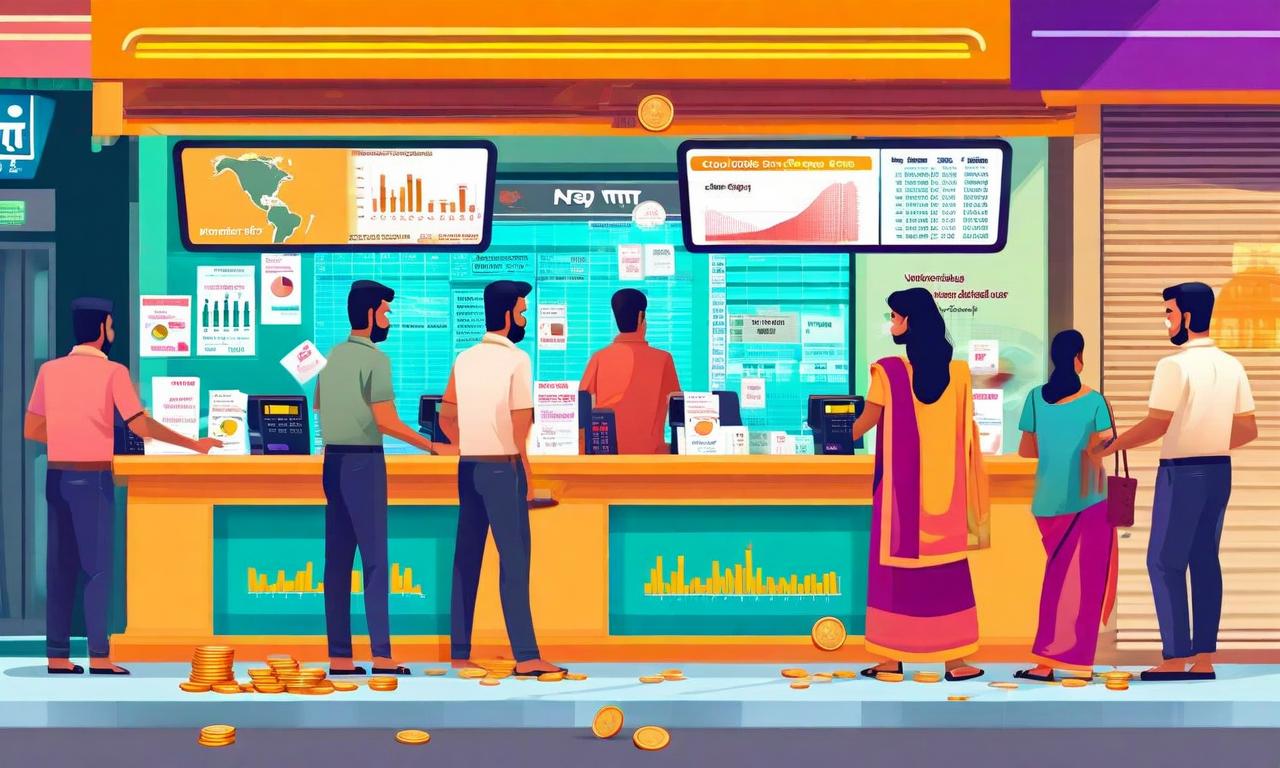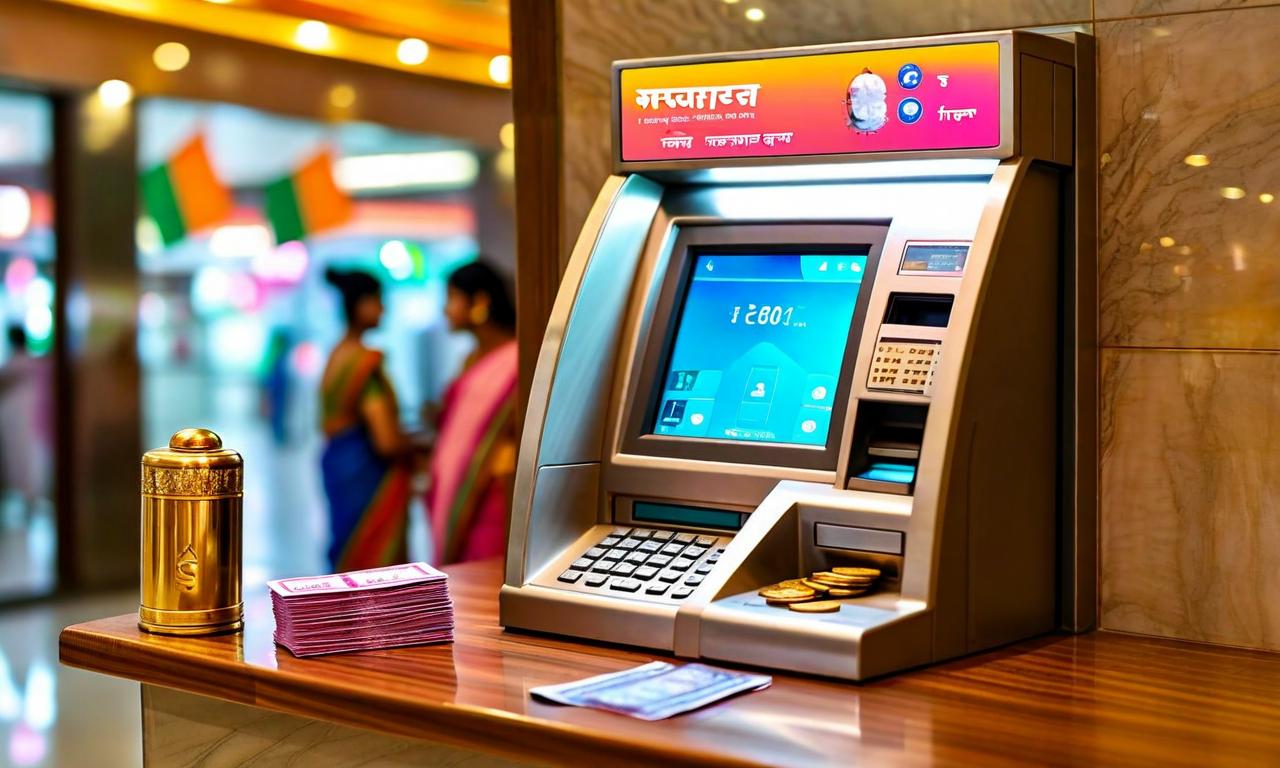Indian Banks See Robust Growth in Advances as Policy Support Strengthens Financial Sector
Three prominent Indian banks have reported significant growth in advances and deposits. Indian Bank saw a 13% increase in advances to Rs 6.22 lakh crore and 12% growth in deposits to Rs 7.76 lakh crore. South Indian Bank reported 9% growth in advances to Rs 92,287 crore and 9.70% increase in deposits to Rs 1.15 lakh crore. Karur Vysya Bank led with 15.50% growth in advances to Rs 92,719 crore and 15.30% increase in deposits to Rs 1.10 lakh crore. This growth is attributed to a 100-basis-point policy rate cut and supportive framework by the RBI. Market analysts predict banks and financials will lead the next phase of market growth.

*this image is generated using AI for illustrative purposes only.
Three prominent Indian banks have reported significant growth in advances, a development attributed to a 100-basis-point policy rate cut and supportive policy framework. This growth trend underscores the positive impact of monetary policy on the banking sector's lending activities, with market analysts predicting that banks and financials will lead the next phase of market growth.
Indian Bank Leads with Double-Digit Growth
Indian Bank emerged as a strong performer, recording a 13.00% year-on-year growth in advances, reaching Rs 6.22 lakh crore. The bank's deposit base also saw a healthy increase, growing by 12.00% to Rs 7.76 lakh crore.
South Indian Bank Shows Steady Progress
South Indian Bank demonstrated steady growth in both advances and deposits. The bank reported a 9.00% increase in advances, amounting to Rs 92,287 crore. Deposits at South Indian Bank grew by 9.70%, reaching Rs 1.15 lakh crore.
Karur Vysya Bank Outperforms with Impressive Growth
Karur Vysya Bank emerged as the standout performer among the three, showcasing the strongest growth figures. The bank reported a remarkable 15.50% growth in advances, pushing its total to Rs 92,719 crore. Equally impressive was the bank's deposit growth, which increased by 15.30% to reach Rs 1.10 lakh crore.
Impact of Policy Support on Banking Sector
The significant growth in advances across these banks is largely attributed to a 100-basis-point policy rate cut and a supportive framework implemented by the Reserve Bank of India (RBI). Despite no further rate cuts in the recent RBI policy, the sector benefits from increased loan limits, IPO funding, and M&A financing capabilities.
Market analyst Dharmesh Kant predicts that banks and financials will lead the next phase of market growth. Both private and public sector banks are taking aggressive positions, with structural conditions favoring Net Interest Margin (NIM) consolidation and Net Interest Income (NII) growth.
| Bank | Advances Growth (YoY) | Advances Amount | Deposit Growth (YoY) | Deposit Amount |
|---|---|---|---|---|
| Indian Bank | 13.00% | Rs 6.22 lakh crore | 12.00% | Rs 7.76 lakh crore |
| South Indian Bank | 9.00% | Rs 92,287 crore | 9.70% | Rs 1.15 lakh crore |
| Karur Vysya Bank | 15.50% | Rs 92,719 crore | 15.30% | Rs 1.10 lakh crore |
The robust growth in both advances and deposits across these banks indicates a positive trend in the Indian banking sector. As these financial institutions continue to expand their loan books and deposit bases, it reflects growing consumer and business confidence in the banking system.
Additional Factors Influencing the Sector
The policy environment particularly benefits public sector banks with new management willing to take calculated risks. Risk-weighted asset cushions on home loans and MSM segments further strengthen the sector.
While the banking sector shows promising growth, potential government tax cuts and dearness allowance hikes could strain fiscal spending and affect infrastructure growth. Broader macroeconomic factors require monitoring as fiscal pressures may impact corporate earnings.
In related sectors, fertilizer companies like GNFC and Chambal Fertilisers are expected to benefit from healthy monsoon conditions, which could indirectly support agricultural lending in the banking sector.
The varied growth rates among the banks highlight the competitive nature of the Indian banking sector, with each institution leveraging the favorable policy environment to drive its growth strategy.














































